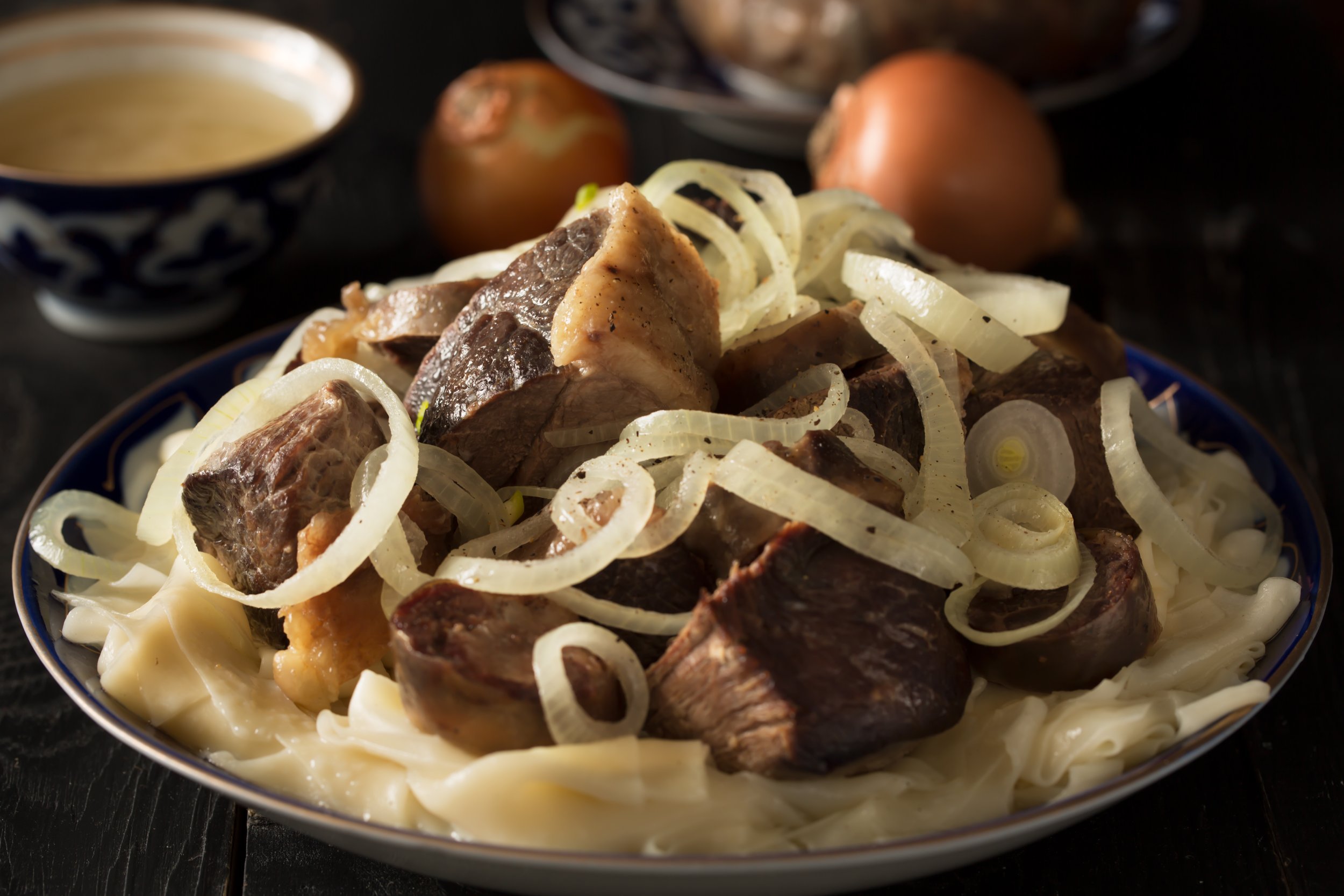Tasting Kyrgyzstan: A guide to our 7 favourite bites in this mountainous nation
Think of ‘top 10 places to travel for food’ and our minds immediately zip to the aromatic indulgence of pizzas and pastas in Italy, and the abundance of smells and flavours filling the Dotonbori streets of Japan, where popular items like ramen, okonomiyaki, and gyoza hold popular reign. Kyrgyzstan is not a well-known tourist destination, much less a ‘foodie’ destination…
But here’s what we’ve discovered; Kyrgyzstan may just be the next place you’ll add to your list.
Kyrgyzstan shares its borders with neighbouring countries such as China, Russia, Turkey, Uzbekistan, Kazakhstan and Tajikistan. And even though it is a small landlocked Central Asia country, the Kyrgyz cuisine you see today is heavily influenced from the neighbouring countries. The Kyrgyz have four quintessential elements in their food - flour, meat, dairy and vegetables - the simplest ingredients, yet they cook some of the most delicious dishes that take you by surprise and leave you longing for more! From its capital, Bishkek, to the countryside, there is always an authentic cuisine to look out for.
Samsa
Similar to restaurants serving a full course meal, you’ll begin with the appetisers. Samsa. Pronounced as ‘some-sa’, which comes from the Persian word ‘Sanbosag’, means ‘lovely triangle’.
Samsa is largely popular across the Central Asia region, and you’ll find them mostly filled with vegetables such as potato, spinach or pumpkin.
Alternatively, the Kyrgyz also use meat, like mutton or beef. The locals here bake Samsa in a tandoor (a traditional clay oven) before serving them to you fresh from the oven. You’re in for a treat as you savour your first bite. The first bite gives you a euphoric feeling of satisfaction down your entire body as it warms your body up in the chilly Kyrgyz weather. Flaky and crusty, it reminds you of home as the taste is akin to our local curry puff. Crunchy, soft and hot.
When you get your hands on it, be sure to pack some to-go as you head into the countryside. Just imagine munching on the crusty Samsa where the juicy meat filling bursts in your mouth after a long horse ride. Oh, indeed it is an ideal go-to snack when you’re resting up in the mountains!
Katama
This pastry is for all ASMR lovers out there.
Scruuuunchhh scruuunccchh.
Another local pastry in this region, Katama is an onion-filled, swirled flatbread. Peeling through the layers of pastry brings the sounds of the crisps and crackles to your ears. Together with the taste of sweet caramelised onion in every bite, Katama is an endearing reminder of our well-loved Roti Prata and Indian Naan bread back in Singapore.
When you do visit Kyrgyzstan, be sure to visit Apam Dyn Kattamady, also known as Mother’s Kattama, in Cholok Village to get your hands on the best Katama in town. Every local we spoke to had never-ending compliments for her pastries;we loved it so much that each of us grabbed more than on Katama to-go!
A Katama is THE perfect companion for you when you’re travelling across Kyrgyzstan; a comforting toast to you and a long scenic drive of discovery.
Beshbarmak
The appetisers sound great, don’t they? But make sure you have ample space in your stomach for some main dishes too! A local favourite, Beshbarmak, pronounced as ‘Bash-bar-mak’ is often considered the national dish of Kyrgyzstan.
Beshbarmak translates to five fingers, which is how the dish should be eaten traditionally, with one hand.
The dish is presented on a big platter, usually prepared for big occasions such as the celebration of the end of your successful expedition. There are so many components to the dish that you don’t know where to start first. Puffy white dough, protein-packed horse meat (they even have the option for mutton or beef), layered over their homemade sauce (tuzdyk) made of onion, salt and meat broth, and thin - shaped noodles for the finish. Beshbarmak will lift your heart and stomach high up in cloud nine!
Kuurdak
Kuurdak, pronounced as ‘Kur-dark’ which means ‘roasted and fried’ in Kyrgz, is another highly popular dish. It has been around since the nomadic Kyrgyz ancestors era.
Made with roasted meat, the internal organs of animals such as horse, cow or goat, onions and various spices like black pepper and green onion, Kuurdak is so easy to make that you can even attempt to prepare it back in Singapore! Also, it is usually served alongside the Beshbarmak; these two dishes definitely pack a punch when paired together!
Oromo
Great news for plant-based lovers! Here’s something for you too; think plump, juicy dumplings stuffed with a variety of vegetables - potato, carrots and onions!
The Kyrgyz dish, Oromo, is so flavourful, it will definitely remind you of our Singaporean popiahs, or if you have ventured to the regions of India and Nepal, Momos! Similarly, Oromo comes in various shapes and sizes as well. Fortunately, our meat-lovers will not miss out too much, as you will be able to find these filled with lamb and beef too if you’re lucky!When you are travelling to Kyrgyzstan, be sure to keep a look out for this simple yet unforgettable dish in most homestays.
Chymchyma
A sister dish to the Oromo, Chymchyma, pronounced as ‘Chim-chi-ma’ is a smaller version made with thin triangle-shaped dough and rolled with minced meat and vegetables (cabbage, carrots or onions).
What makes Chymchyma different is that you can assemble it on your own with the various fillings that are served right in front of you!
Kesme
You are on a ‘foodie’ roll today; after several different meat dishes and dumplings, here’s the 6th dish. You may think you’ve seen it all, but there is more yet to be served. Kesme is a type of egg noodle that is popular in Kyrgyz cuisine and the rest of the Central Asia region.
Kesme, pronounced as ‘Cass-me’ means ‘to cut’ or ‘to slice’, referring to the slicing of the dough involved in preparing the noodles.
Kesme is made from flour, egg, water, salt and milk. These ingredients are worked into a dough, which is then rolled out, cut, and dried in the sun or an oven after being dried for a day. Just like the Oromo, Kesme is traditionally a homemade dish, and not often found at restaurants or cafés. So if you have the opportunity to savour it from a local home, make sure you enjoy every single slurp!
Kymyz
Last but not least, you shouldn’t leave Kyrgyzstan without trying Kymyz, pronounced as ‘Key-miss’, it is a national Kyrgyz drink made from fermented mare's milk. With a hint of alcohol, there’s this jolt of tanginess that is quite an acquired taste.
Its flavour most resembles drinks like Kefir or Ayran (both drinks are also made from fermented milk) from Turkic and Central Asian cultures. Kymyz is believed to confer a range of health benefits to those who consume it, strengthening gut health and improving digestion.
In the past, Kymyz was often used by nomads to treat diseases such as tuberculosis, anaemia, and stomach-related illnesses. Eventually, Kymyz was also used as a traditional medicine to help cure gastritis, pancreatic diseases, cardiovascular diseases, and typhoid. Talk about a drink that works like a magic potion!
Your food tour around Kyrgyzstan comes full circle. As your mind is enriched and full from this 7-course introduction to Kyrgyz cuisine, the only thing left to do is to fill that stomach of yours with all these scrumptious foods.
What are you waiting for? Time to travel up to the Land of Celestial Mountains, the Kyrgyz are eagerly waiting to host and serve you! Sign up here if you’re ready to embark on a quest for the food of Kyrgyzstan, a mystical region that has yet to be explored by many.
Article Written By: Dzul
Beyond Expeditions’ Adventure Content Writer since June 2022 and pursuing his Communications Degree in Singapore University of Social Science. He hopes to continue his knack for travel writing, sharing stories in hopes of inspiring the travel bug in his readers. He dabbles in photography on the sides and wants to incorporate beautiful visuals in his storytelling. A true fan of the outdoors, his thirst for adventure is second to none!









